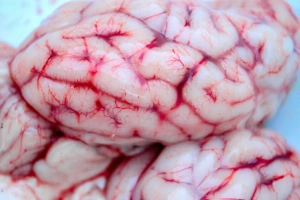The Interplay of Beliefs and Behavior: What Social Psychology Teaches Us
The intricate relationship between beliefs and behaviors has fascinated scholars for decades, particularly within the domain of social psychology. This field examines how individual thoughts, attitudes, and cultural norms shape the actions and interactions of people. Understanding this interplay is crucial for addressing various societal issues, from public health campaigns to workplace dynamics, and it illuminates how our beliefs influence our daily behaviors.
Understanding Beliefs
Beliefs are often seen as the cornerstone of human action. They encompass our convictions about the world, others, and ourselves. The psychological basis for beliefs can be broadly categorized into two types: cognitive beliefs, which are based on knowledge and the rational assessment of information, and affective beliefs, which are shaped by emotions and feelings.
The Formation of Beliefs
Beliefs typically form through several key processes:
- Experience: Personal experiences profoundly shape beliefs, as individuals draw conclusions based on their interactions with the world.
- Socialization: Family, friends, and cultural norms all play a significant role in shaping our beliefs. For example, children often adopt the beliefs of their parents and social circles.
- Education: Formal and informal education can shape our understanding of various issues, impacting belief systems significantly.
- Media Influence: With the rise of digital media, exposure to diverse narratives can reinforce or challenge existing beliefs.
The Role of Cognitive Dissonance
One of the most significant concepts in social psychology related to beliefs is cognitive dissonance, first introduced by Leon Festinger in the 1950s. Cognitive dissonance occurs when an individual holds two conflicting beliefs or when their actions contradict their beliefs. This psychological discomfort often leads people to change their beliefs or justify their behaviors to restore harmony[modern_footnote_source].
For instance, a person who believes in healthy eating but frequently indulges in junk food might experience cognitive dissonance. To alleviate this discomfort, they might downplay the importance of their belief about healthy eating or rationalize their behavior by claiming that they will exercise later.
The Impact of Beliefs on Behavior
Beliefs significantly influence behavior, often dictating how we respond to various situations. For example, one’s belief in climate change encourages eco-friendly behavior, such as recycling or using public transport. Conversely, disbelief in climate change may lead to complacency regarding environmental issues.
Research shows that belief alignment with behavior is essential for long-term change. For instance, health campaigns that aim to modify unhealthy behaviors—like smoking or excessive drinking—are more effective when they resonate with the target audience’s beliefs. This underlines the importance of understanding an audience’s belief system when designing intervention strategies.
Behavioral Theories in Social Psychology
Several theories in social psychology help explain how beliefs and behaviors intertwine:
1. The Theory of Planned Behavior
Ajzen’s Theory of Planned Behavior posits that individual behavior is driven by intentions, which are shaped by three factors: attitudes towards the behavior, subjective norms, and perceived behavioral control. According to this model, a strong belief in the benefits of an action, social support, and confidence in one’s ability to perform the action all contribute to the likelihood of carrying it out[modern_footnote_source].
For example, a person who believes they can successfully quit smoking (perceived behavioral control) and hears positive messages about the health benefits from friends (subjective norms) is more likely to attempt quitting than someone lacking those supports.
2. Social Learning Theory
Albert Bandura’s Social Learning Theory emphasizes the role of observation and imitation in learning new behaviors. Individuals often adopt behaviors based on their observations of others, particularly those they admire or perceive as role models. Beliefs about the behavior’s social acceptability and perceived outcomes also play crucial roles.
For instance, if a child observes their parents recycling and hears positive discussions about environmentalism, they are more likely to adopt the belief that recycling is a valued behavior and, subsequently, engage in it themselves.
3. The Elaboration Likelihood Model
The Elaboration Likelihood Model explains how individuals are persuaded to change their beliefs and subsequently their behaviors. Central route persuasion involves deep processing of information, leading to a lasting change in attitudes and behaviors. In contrast, peripheral route persuasion relies on superficial cues (e.g., attractive spokespersons or emotional appeals) that may lead to temporary changes[modern_footnote_source].
This model can help explain why certain public health campaigns can successfully change behavior while others fail. Campaigns utilizing strong, credible arguments (central route) may lead to more permanent behavior changes compared to those that rely on emotional appeals alone (peripheral route).
The Reciprocal Nature of Beliefs and Behavior
The interaction between beliefs and behaviors is not unidirectional; rather, it is reciprocal. While beliefs influence behavior, behaviors can also shape beliefs. This phenomenon is evident in various aspects of life:
Confirmation Bias
Individuals tend to seek information that confirms their existing beliefs while disregarding contradictory evidence. This bias can perpetuate erroneous beliefs and influence future behaviors. For example, a person who identifies strongly with a political ideology may only consume media that aligns with that ideology, reinforcing their beliefs and guiding their political actions.
The Role of Behavioral Commitment
Engaging in a behavior often solidifies one’s beliefs about that behavior. Known as the foot-in-the-door technique, once a person commits to a small action, they are more likely to align their beliefs to sustain that behavior. For example, someone who agrees to volunteer for a cause may subsequently develop a stronger belief in its importance due to their involvement.
The Social Identity Theory
The Social Identity Theory posits that individuals categorize themselves and others into groups, affecting behaviors based on group beliefs. Group membership influences behaviors through conformity to the group’s norms and beliefs. For instance, belonging to a community with strong environmental beliefs may reinforce an individual’s commitment to practices such as recycling or conservation efforts[modern_footnote_source].
The Practical Implications of Understanding Beliefs and Behavior
A deep understanding of the interplay between beliefs and behaviors can lead to practical applications in various fields, including healthcare, business, education, and social justice.
Public Health Initiatives
Public health campaigns often strive to change beliefs to modify behavior. Understanding community beliefs about vaccination can inform strategies to increase vaccination uptake. Tailored messages that resonate with specific beliefs (e.g., community responsibility) are more likely to succeed than generic appeals.
For instance, during the COVID-19 pandemic, campaigns emphasizing the protective benefits of vaccination for loved ones were more effective in communities with strong familial beliefs compared to those focusing solely on personal health benefits.
Organizational Behavior
In the workplace, understanding how beliefs impact employee behavior can lead to enhanced workplace culture and productivity. Employers who recognize the importance of fostering a positive belief system around team collaboration, innovation, and recognition are more likely to inspire engagement and high performance.
Education Strategies
Educators can leverage insights from social psychology to foster a positive learning environment. By understanding students’ beliefs about their abilities (self-efficacy), educators can tailor interventions to boost confidence and encourage active learning[modern_footnote_source]. Furthermore, incorporating diverse perspectives can broaden students’ beliefs and promote inclusivity.
Social Change Movements
Social movements often aim to shift public beliefs to advocate for legislative or cultural change. Recognizing the interplay between beliefs and behaviors can enhance the effectiveness of campaigns. Strategies that employ storytelling, shared experiences, and relatable figures can resonate more deeply with target audiences, promoting behavioral change towards the movement’s goals.
The Future of Research on Beliefs and Behavior
As the study of beliefs and behaviors continues to evolve, several areas warrant further exploration:
-
Digital Influence: With the rise of social media, understanding how online interactions shape beliefs and behaviors is crucial. Exploring the impact of echo chambers and online misinformation can provide insight into contemporary belief formation.
-
Cultural Variation: Cross-cultural studies examining how different cultural contexts impact beliefs and behaviors can offer a more comprehensive understanding of the interplay between these constructs.
-
Longitudinal Studies: Tracking changes in beliefs and behaviors over time can reveal dynamic patterns and help identify critical windows for interventions.
-
Integrating Neuroscience: Exploring the neurological underpinnings of belief formation and behavioral responses can enhance our understanding of the cognitive processes involved, paving the way for more targeted interventions.
Conclusion
The interplay between beliefs and behavior is complex and multifaceted, influenced by an array of psychological, social, and cultural factors. Social psychology provides valuable insights into how these two constructs shape human interaction and societal dynamics. By understanding this relationship, we can develop more effective strategies for fostering positive change across various spheres of life and address pressing social challenges. Whether in public health, organizational settings, or social movements, the implications of beliefs on behavior—and vice versa—are profound and far-reaching.
The ongoing exploration of this interplay promises to inform our understanding of human nature and enhance our capacity to effect meaningful change in the world around us.
References
- Festinger, L. (1957). A Theory of Cognitive Dissonance. Stanford University Press.
- Ajzen, I. (1991). The theory of planned behavior. Organizational Behavior and Human Decision Processes, 50(2), 179-211.
- Bandura, A. (1977). Social Learning Theory. Prentice Hall.
- Petty, R. E., & Cacioppo, J. T. (1986). Communication and Persuasion: Central and Peripheral Routes to Attitude Change. Springer-Verlag.
[modern_footnote_source]: References formatted according to modern citation practices.


























Add Comment